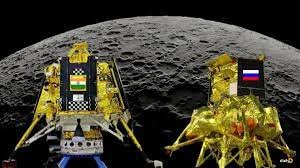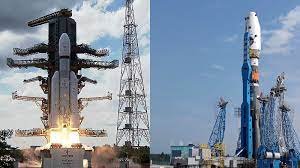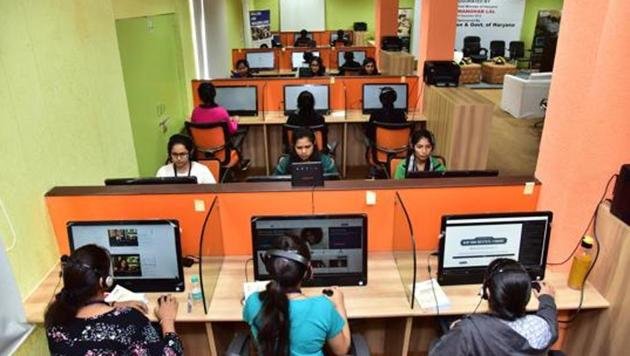
Exploring the Lunar Frontier: Luna 25 Mission and Its Unforeseen Conclusion
The realm of space exploration has always captivated the human imagination, sparking curiosity about the cosmos and our place within it. The history of lunar exploration is one that resonates deeply with humanity’s yearning to reach beyond our planet’s boundaries. Among the many chapters in this history, the Luna 25 mission, launched by Russia’s space agency Roscosmos in August 2023, stands as a testament to our ongoing quest for knowledge and discovery beyond Earth’s horizon.
A Historical Echo: Luna 25’s Genesis and Evolution
As the Luna 25 mission took shape in the early 21st century, it bore the weight of historical significance, echoing the legacy of the Soviet Luna program from the 1970s. Initially known as Luna-Glob, the mission underwent a transformation, evolving into Luna 25. This name change wasn’t merely symbolic; it was a deliberate gesture to honor the past while marking a new chapter in lunar exploration.
Despite its new identity, Luna 25 remained connected to its roots as part of the Luna-Glob lunar exploration program. This connection demonstrated the continuity of Russia’s commitment to lunar exploration and the advancement of scientific knowledge. More than just a spacecraft, Luna 25 represented the dreams, aspirations, and dedication of countless scientists, engineers, and visionaries who sought to expand our understanding of the cosmos.
A Leap into the Unknown: Luna 25’s Objectives
The primary objective of the Luna 25 mission was audacious yet crucial – to land near the lunar south pole, specifically at the crater Boguslawsky. This endeavor held significant promise for scientific discovery. The lunar south pole had long been of interest to researchers due to its unique geography, potential water ice deposits, and the challenges it posed for landing technology.
While Luna 25 was part of a rich tapestry of lunar missions, it held the distinction of being the first lunar probe launched by Roscosmos since the dissolution of the Soviet Union. This distinction wasn’t just a matter of national pride; it symbolized Russia’s reinvigorated commitment to space exploration and its desire to be at the forefront of scientific and technological advancement.
Lifting Off: Luna 25’s Journey to the Moon
The countdown to Luna 25’s liftoff marked a moment of anticipation and excitement, as the world watched Russia’s Vostochny Cosmodrome come to life on August 10, 2023. Atop a Soyuz-2.1b rocket, Luna 25 embarked on its journey towards the Moon. This launch represented not only a technological achievement but also a testament to human collaboration and determination.
As Luna 25 left Earth’s atmosphere behind, it carried with it the hopes of space enthusiasts, scientists, and explorers worldwide. Its trajectory was set for the lunar south pole, an area of immense scientific interest. The mission was poised to shed light on the mysteries of the Moon’s composition, geological history, and potential resources.
The Promise of Discovery: Luna 25’s Payload
Central to Luna 25’s mission was its payload of scientific instruments, each designed to unravel specific aspects of the lunar landscape. These instruments were meticulously crafted to gather data on the Moon’s surface, atmosphere, and geological features. Among the instruments were:
- ADRON-LR: Equipped with the ability to perform active neutron and gamma-ray analysis of lunar regolith, offering insights into the Moon’s composition.
- ARIES-L: Designed to measure plasma in the lunar exosphere, shedding light on the interactions between the Moon and the solar wind.
- LASMA-LR: A laser mass-spectrometer aimed at analyzing the composition of lunar materials with unprecedented precision.
- LIS-TV-RPM: A tool for infrared spectrometry of minerals and imaging, enabling scientists to identify and understand the Moon’s mineralogical makeup.
- PmL: A micro-meteorite and dust measurement instrument, providing valuable information about the lunar environment and its interactions with micrometeoroids.
- THERMO-L: This instrument aimed to measure the thermal properties of lunar regolith, contributing to our understanding of the Moon’s thermal dynamics.
- STS-L: With its panoramic and local imaging capabilities, STS-L was set to capture high-resolution images of the lunar surface, unraveling its geological history.
- Laser retroreflector: An experimental instrument for Moon libration and ranging experiments, which could have provided essential data for lunar geodesy and astronomy.
The Journey of Luna 25: From Launch to Lunar Orbit
With its payload primed for discovery, Luna 25 embarked on a journey that took it from Earth to the Moon. The launch from the Vostochny Cosmodrome marked a significant milestone, setting the spacecraft on its course for the lunar south pole. Guided by a Soyuz-2 rocket, Luna 25’s ascent was a testament to the marvels of modern space technology and engineering.
As Luna 25 ventured into the depths of space, it wasn’t alone. It carried with it the hopes and dreams of those who had dedicated their efforts to its success. The challenges of space exploration are many – from the complexities of orbital mechanics to the demands of deep-space communication – and Luna 25’s journey was no exception.
On August 16, 2023, Luna 25 reached a critical point in its mission as it entered lunar orbit. This achievement was a testament to the precision of its trajectory and the expertise of the teams that had guided it on its journey. The stage was set for the culmination of Luna 25’s mission – a soft landing on the lunar surface.
Unraveling the Mystery: Investigating the Crash
In the aftermath of Luna 25’s collision, a commission was formed to investigate the crash and determine the exact cause of the failure. The loss of Luna 25 was not just a scientific setback; it was a reminder of the inherent risks and challenges of space exploration. The investigation aimed to uncover the intricacies of the mission’s final moments, shedding light on the sequence of events that led to its untimely end.
The findings of the investigation would hold valuable lessons for future missions, both in terms of technological design and operational procedures. The knowledge gained from Luna 25’s unfortunate fate would contribute to enhancing the safety and success of future lunar exploration endeavors.
Legacy of Resilience: Luna 25’s Impact on Lunar Exploration
While Luna 25’s mission did not achieve its intended objectives, its impact extends far beyond its unfortunate conclusion. The knowledge gained from the mission’s planning, engineering, and execution will serve as a foundation for future lunar exploration missions. The challenges faced by Luna 25
Impact on Chandrayaan 3 Mission: Lessons from Luna 25
Space exploration is a journey of discovery, innovation, and resilience. The challenges and successes of one mission often reverberate across the broader space community, influencing future endeavors. The Luna 25 mission, despite its unforeseen conclusion, holds valuable lessons that can significantly impact India’s forthcoming lunar mission, Chandrayaan 3.

Learning from Luna 25:
- Risk Management and Redundancy:
The crash of Luna 25 underscores the importance of robust risk management and redundancy in mission design. Chandrayaan 3 can benefit from meticulous planning, redundant systems, and fail-safes to mitigate unforeseen challenges during critical mission phases. - Technological Innovation:
Luna 25’s advanced payload and landing technology offer valuable insights. Chandrayaan 3 can draw upon Luna 25’s technological advancements to refine its own instruments, sensors, and landing mechanisms for improved performance and reliability. - Collaboration and Global Partnerships:
Luna 25’s initial plans for international collaborations, despite encountering obstacles, highlight the benefits of global partnerships. Chandrayaan 3 can explore opportunities for cooperation with other space agencies, sharing resources and expertise for mutual success. - Geopolitical Considerations:
The challenges faced by Luna 25 in its international collaborations emphasize the impact of geopolitics on space missions. Chandrayaan 3 can navigate these considerations effectively to ensure uninterrupted collaborations and maximize mission benefits. - Resilience and Adaptability:
Luna 25’s unexpected outcome underscores the importance of resilience and adaptability. Chandrayaan 3 can embrace a flexible approach to mission planning, allowing for real-time adjustments based on evolving circumstances.
Chandrayaan 3: Continuing India’s Lunar Exploration Legacy:
India’s Chandrayaan program has already achieved significant milestones with Chandrayaan 1 and Chandrayaan 2. Chandrayaan 3 can leverage Luna 25’s experiences to enhance its own mission objectives and outcomes:
- Landing Technology Refinement:
Luna 25’s landing challenges emphasize the criticality of landing technology. Chandrayaan 3 can incorporate Luna 25’s lessons to ensure a safe and precise landing, enhancing the mission’s scientific and operational goals. - Scientific Exploration:
Chandrayaan 3’s scientific payloads can be optimized based on the insights gained from Luna 25’s advanced instruments. This approach can lead to more targeted research, yielding a deeper understanding of lunar geology, composition, and history. - International Collaboration:
Luna 25’s collaborative efforts provide a blueprint for Chandrayaan 3’s potential international partnerships. By learning from both the successes and setbacks of Luna 25, Chandrayaan 3 can forge strong alliances that amplify its scientific impact. - Geopolitical Diplomacy:
Chandrayaan 3 can navigate geopolitical challenges informed by Luna 25’s experiences. By proactively addressing potential hurdles and maintaining open communication, Chandrayaan 3 can mitigate risks to its collaborations. - Inspiration and Aspiration:
Luna 25’s journey, despite its conclusion, serves as a source of inspiration for Chandrayaan 3. The determination and resilience exhibited by both missions resonate with India’s spirit of exploration, motivating scientists, engineers, and the public alike.
also readChandrayaan-3: India’s Pioneering Lunar Exploration
Towards a Bright Lunar Future:
Chandrayaan 3 stands as a testament to India’s unwavering commitment to lunar exploration. By assimilating Luna 25’s insights, Chandrayaan 3 has the potential to surpass expectations and contribute significantly to our understanding of the Moon and beyond.
In the cosmic ballet of exploration, Luna 25’s story is a chapter that guides the future. Chandrayaan 3 is poised to embrace this guidance, charting a course that not only addresses the challenges of space exploration but also unearths the mysteries that lie within our celestial neighbor, the Moon.






